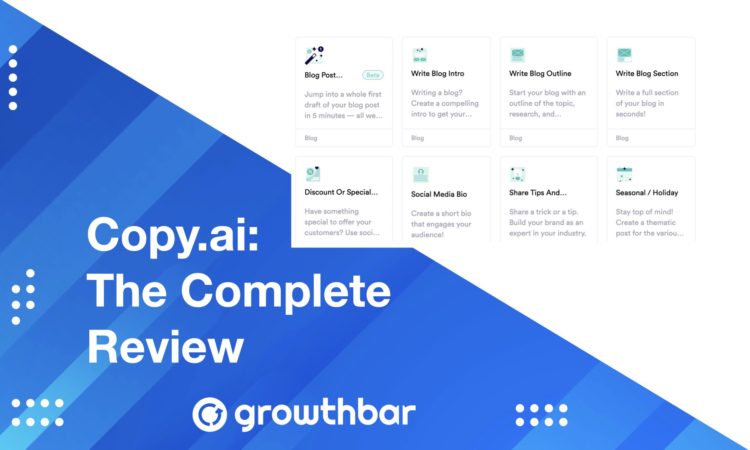Ended soon
When it comes to her handcrafted candle business, Sarah writes about her product the way she knows it: like the back of her hand. She optimizes her website for the term “handcrafted candles” because, well, that’s what she sells online.
Her website’s growth is slow, and she wonders where the problem is. I’ll break it to her:
She overlooks the fact that a huge chunk of her potential customers commonly refer to her products as “luxury candles.” As a result, her site fails to capture the broader market searching for that term. And potential customers go straight to her competitors.
And that, folks, is one of the many reasons you should do keyword research.
While “ranking higher on Google” is the universal desired outcome of keyword research, it’s not its primary purpose. Repeat after me: you should conduct keyword research to understand the specific words and phrases your audience uses to search for your products online. You’ll only get those top spots if your content addresses your audience’s needs.
Granted, it sounds like a lot of work. It is a lot of work (if you want to get it right), but it doesn’t have to be painstaking work anymore.
Not with Artificial Intelligence (AI) in your toolbelt.
AI efficiently analyzes a ton of data in a fraction of the time, uncovering valuable keywords that can boost your content. Not only that, but it also helps you place those keywords correctly for better chances at ranking.
But before I get into the nitty-gritty of how to use AI as a welcome bonus, I’d like to go back to the basics for a bit.
(If you’re already a keyword research pro, feel free to skip to the AI chapter!)
Table of Contents
Keyword Research: Start with the Basics
The Tools You Use Matter
Whether free or paid, the right SEO tools can help you achieve your SEO goals much faster. Any tool worth its salt will give you metrics like search volume, Keyword Difficulty (KD), and related terms.
A few contemporary tools, however, will also give you access to AI features to take your research even further. More on that later 👀.
If you don’t do keyword research very often and don’t feel like taking out your credit card, there are plenty of great free options available. They include Google Search Console (for position tracking), ChatGPT, and Google Keyword Planner. There are also free versions/trials of popular keyword research tools.
Now, if you’re willing to bank on high-quality tools, there’s no shortage of alternatives either. Some of the best tools include Moz, Ahrefs, Semrush, and GrowthBar.
In a perfect world, you’d be able to do keyword research and competitor analysis, and boost your strategy with AI – all within the same platform. And with GrowthBar, you can!
It features both SEO and AI tools, and it’s now powered by ChatGPT-4. You get the best of both worlds – without switching tabs.
Choose Relevance
When you’re first compiling your seed keyword list, you’ll have all kinds of terms jammed in there.
However, when it comes to shortlisting your options, you need every single one of your keywords to be relevant to your offering. It’s easy to think that all of them are relevant – they’re all related, after all.
But here are a couple of tips to zero in on the keywords that actually matter:
Consider your differentiators. Let’s say you have an AI article-writing tool. For instance, if your tool specializes in natural language processing, keywords like “NLP article writing tool” would be highly relevant and more specific than just “article writing tool.”
Scrap any terms that don’t align with your business. Let’s consider an AI article-writing business specifically designed for content marketing professionals, much like GrowthBar. Do you see us talking about writing research papers?
You don’t – because our tool was built to help content marketers write SEO-focused content faster.
In that case, we’d weed out any keywords related to academic writing, such as “how to write a research paper using AI.” Conversely, AI tools focusing on academic writing (such as Jenni.ai) would do the same with marketing writing.
In short, relevance in keyword research is about choosing terms that not only describe your offering but also resonate with your target audience’s language and intentions. The right keywords keep your content on your audience.
Long-Tail (Almost) All the Way
Long-tail keywords typically consist of three or more words, although there’s no strict rule about the exact number of terms. They can be broader and shorter (“AI writing tools comparison”) or specific and longer (“how to use AI writing software for creating engaging blog content”).
You know the typical advice: “Focus on long-tail keywords to rank higher, faster.”
That’s solid advice. Despite having lower search volumes, long-tail keywords are inherently more specific, detailed, and less competitive. If you could write a stellar, fully optimized blog post in which you focus on the second, super long-tail keyword example, you’d likely rank #1 for that specific term.
However…
Because it’s so specific, it’s one of those keywords you’d struggle to find volume data on. Case in point:
Source: Semrush
Semrush won’t even display data for this keyword.
And keywords with little to no monthly searches = decreased potential for organic traffic.
Moral of the story: include both long-tail and loooong-tail keywords in your research. But don’t discard head terms (like AI writing) entirely.
Ideally, you should go for a mix of short and long-tail keywords. This allows you to capture a wide range of user queries, from broad searches to highly specific ones, and tailor your content to meet multiple user needs at different stages of their journey.
How Competitive Is Too Competitive to Target?
The thing with competitive keywords is that targeting them successfully requires a bit more elbow grease. You either have to be a high-authority business or have a go-getting team working hard to compete for a high-demand keyword.
Let’s take the keyword “AI content writer” as an example. Considering that there are 14,700 artificial intelligence startups in the US alone, and assuming that content writing tools take up considerable space, that’s a competitive keyword to rank for.
You can bet that all AI writing tool founders are salivating over that keyword. But, according to Semrush, that’s a hard fish to catch.
If you go to Semrush and Keyword Research > Keyword Overview, you’ll find out why.
Source: Semrush
Could a business that isn’t Copy.ai, Frase.io, or GrowthBar rank well for that term? Yes. But that would call for a lot more than writing a blog post.
Their team would need to work hard on link-building strategies for that much-needed authority transfer. That approach would require a budget involving outreach campaigns, collaborations, relationship-building, and other strategies to attract backlinks from reputable sources.
Not to mention other additional (yet essential) strategies such as technical SEO, page speed optimization, mobile responsiveness, and other factors that contribute to search engine rankings.
If your business still isn’t one of the big guys, include plenty of keywords with decent search volume and manageable competition in your research. They’re much easier to rank for than highly competitive terms, yet still bring in valuable traffic.
It’s a similar concept to “big fish in a small pond,” in which you seek to dominate a smaller portion of the market for greater influence. That is, until the pond becomes too small, and you can compete in a broader environment.
Always Consider Intent
Get your keywords’ intent wrong, and you’ll derail your entire plan. When creating your strategy, be extremely aware of the different intent types (and the best ways to target them):
- Informational Intent: Users with informational intent might search for terms like “How to find the best AI article writers” as they’re seeking guidance and information about a certain term. Queries around this intent usually center around words like “what,” “why,” and “how.”
- Navigational Intent: Those with navigational intent already have a specific address in mind. That’s when users may search for “Growthbarseo.com.”
- Commercial Intent: Commercially inclined users may use search terms such as “Compare prices for AI article writing services” when exploring options and pricing before making a decision. Common words for these queries include “best,” “versus,” and “compare.”
- Transactional Intent: These searchers are ready to take action, which is why searches with transactional intent will contain words like “subscribe,” “buy,” “pricing,” or “sign up.” For example, “AI article writer pricing.”
That’s the bulk of it – but search intent isn’t always that straightforward (we wish!). Depending on the query, it can be misleading sometimes.
For example, a search for “best budget smartphones” might indicate an intention to purchase rather than purely seeking information. And just like that, it’s no longer commercial but transactional.
To discover the real search intent behind blurred keywords, look at the search engine results page (SERP) features. Google may display featured snippets, knowledge panels, or image carousels pointing to whether users are seeking quick information, product details, or other type of content.
Do Research for the Whole Funnel
Unless you’re doing keyword research for a one-off blog post, for example, you should research for all intents at every stage of the funnel.
Why? Because users are always moving along the buyer journey, and they may get in touch with your brand at the top, middle, or bottom of the funnel. And if you want the best chances at converting them, you need to meet them where they’re at.
As a quick refresher, the marketing funnel consists of three main stages:
- Top of the Funnel (ToFu): This stage is all about educating readers about your offerings and spreading the word about your brand. That’s where potential customers may be looking for information, eventually coming across solutions to their problems. Informational keywords reign supreme.
- Middle of the Funnel (MoFu): Here, potential customers are digging deeper. We’re here to guide them with useful info, helping them make up their minds. Keywords will generally have commercial and some Informational intent (research-oriented).
- Bottom of the Funnel (BoFu): Decision time! Potential customers are ready to commit. Our content is there to seal the deal by addressing their specific needs and nudging them towards that final decision. At this point, keyword intents are transactional and possibly commercial.
Mapping keywords to different stages of the journey helps you create content that smoothly guides them toward what they’re looking for.
How to Boost Your Keyword Research with AI
Speed Up the Job With an AIChat
I’d like to preface this by stating the obvious: AI is no substitute for traditional keyword research tools. That said, it’s a stellar addition to your workflow – especially when it comes to fast-tracking repetitive tasks.
For example, let’s say the keyword “AI writing” is too competitive for me to target, and I’m looking for alternative terms. Part of my research could be looking for related topics to cover in my content.
In that case, I’d go to GrowthBar’s Chat feature (right under “AI tools”) and ask the AI assistant:
“What are the 5 most popular sub-topics related to AI writing?”
The output would look like the following:
For keyword research purposes (basically, copying-and-pasting), we’d ask Chat to remove the descriptions. Like so:
“List without description the 5 most popular subtopics related to AI writing.”
Et voilà.
Add those to your seed list.
Now, let’s get more specific. If I wanted to add more long-tail terms to my list, here’s what I’d ask:
“List without description the top 10 most popular long-tail keywords for the topic AI writing.”
You could ask it to list 10, 20, 30 terms. It’ll depend on how deep you want to go into your research. It might look something like this:
Are you writing a blog post in which you want to really answer your readers’ questions? In that case, just ask chat to:
“List 10 long-tail questions users search for related to AI writing.”
Those are all great outputs. But that’s GPT, not a keyword research tool. It’s also when you may start asking yourself how reliable each of those answers is, particularly because some of them are ultra-specific.
So what do you do? You Google them for a gut check.
As you can see, the query “How can I ensure diversity and avoid bias in AI-generated content” is very much populated with relevant articles. They may not be exact matches, but the SERP does include semantically related terms. So, yes – people are searching for it.
There are tons of prompts you can give to GrowthBar’s Chat. Here are a few more examples:
- List Without Description The Top Related Keywords for (Topic):
- List Without Description Topic Clusters Related to (Keyword):
- List (X Number) of (User Intent) Keywords Related to (Topic):
- Filter the Below List of Keywords into Searcher Intent
This mega-post from Search Engine Journal goes a step further, teaching you how to prompt AI bots like Chat and ChatGPT to organize your keywords by personas, search volume, and more. It’s definitely worth a read.
Waste No Time Going from Keywords to Content
Keyword research is half the battle. You need to strategically place those keywords in your content for the best chances of ranking. Otherwise, all that effort may have been in vain.
Let’s say that, during my keyword research in GrowthBar (SEO Tools > Keyword Research), I wanted to target the keyword “free AI writing.”
If I wanted to, I could start creating AI-powered, SEO-optimized content right away. Here’s how:
All I’d have to do is click the three dots on the right-hand side and click “Create Content.”
Next, GrowthBar would take me straight to the Content Generator – a best-in-class tool for generating and optimizing SEO content.
It analyzes natural language to help you write naturally while plugging in the keywords that matter for your content. It does that by sifting through 100+ pages in the SERPs in seconds.
Doing that manually would take me days or weeks.
I could write a post from scratch if I wanted to. But I didn’t want to. So, instead, I generated a blog post optimized for the keyword “free AI writing” in a couple of minutes.
My very first draft already looked like this:
For my next step, I’d follow GrowthBar’s recommendations about internal linking opportunities and keyword usage. It tells me exactly where I should include my target keywords – and how many times to include them – for SEO-perfect content.
Right up there, I also have the Chat available. So that if I ever want to add any data points or examples, I don’t need to leave GrowthBar to do so.
That’s my keyword research process, with a little AI boost to make things a lot quicker and more effective across the board!
All That Said…
As you can see, keyword research is just a means to an end. Your main focus should be on creating high-quality, relevant content that addresses the needs of your target audience.
Then, you can think about rankings.
And remember: keep an eye on the metrics. Use GrowthBar’s Rank Tracker to keep an eye on the performance of your main keywords through the Google Search Console integration.
If certain terms aren’t moving the needle, be ready to adjust your strategy and focus on more effective terms. It’s a constant endeavor, but watching your rankings climb and attracting your leads is priceless!
- How to Create a Complete Topic Map for SEO - December 1, 2023
- How to Track Keywords without Getting a Headache - November 24, 2023
- How to Boost Your Keyword Research with AI [5+ Practical Tips] - November 24, 2023



